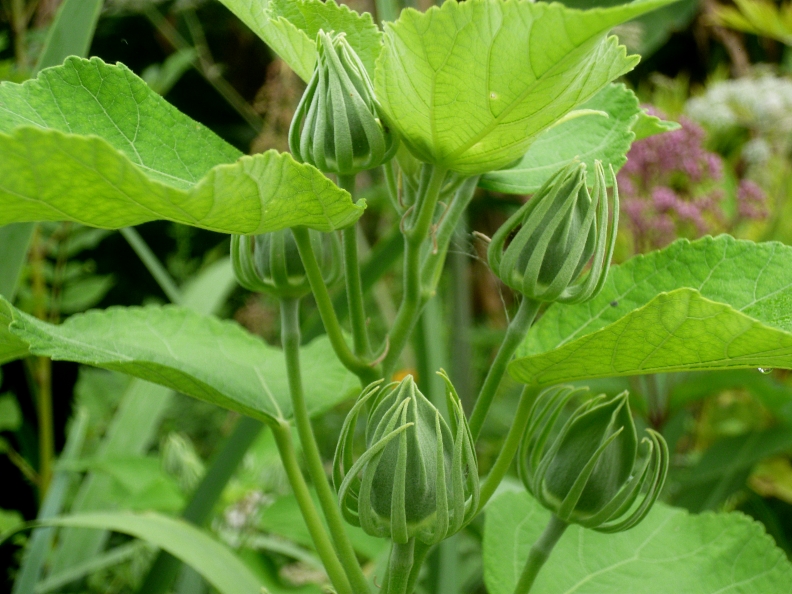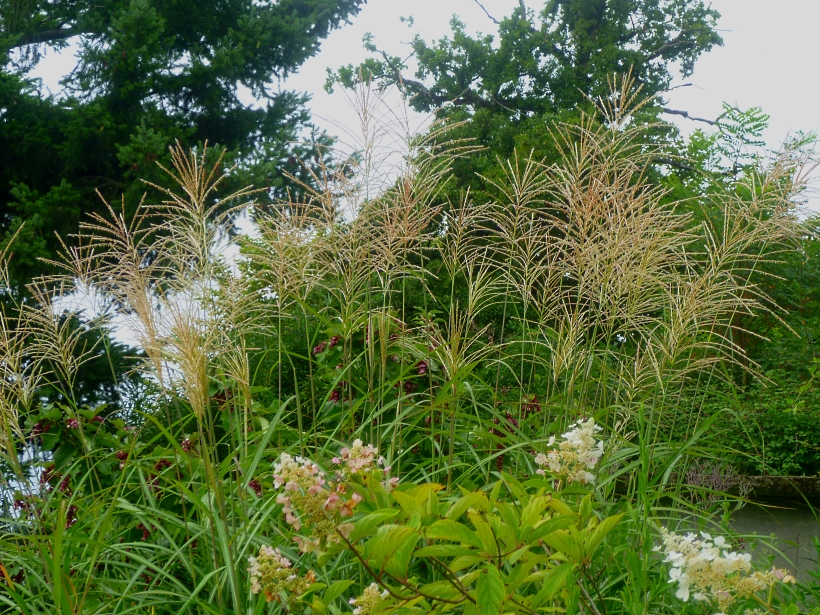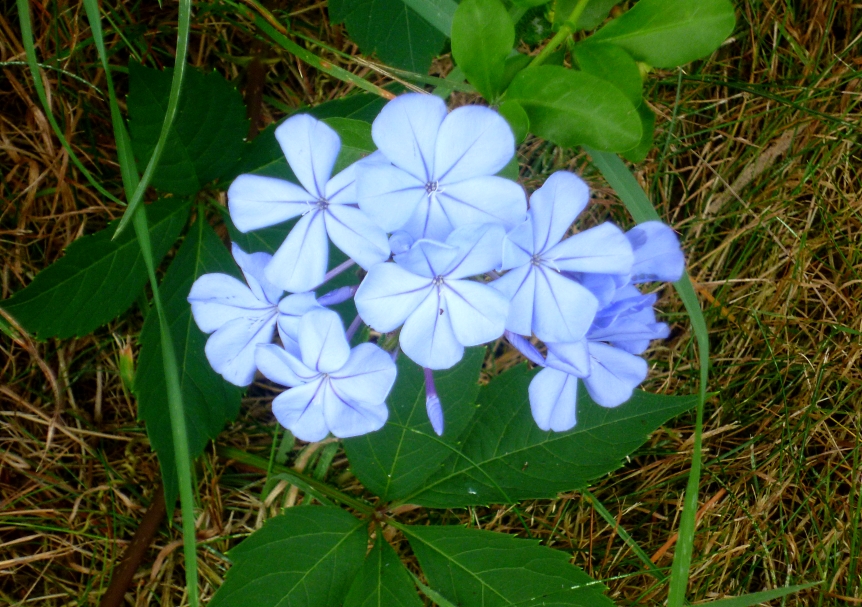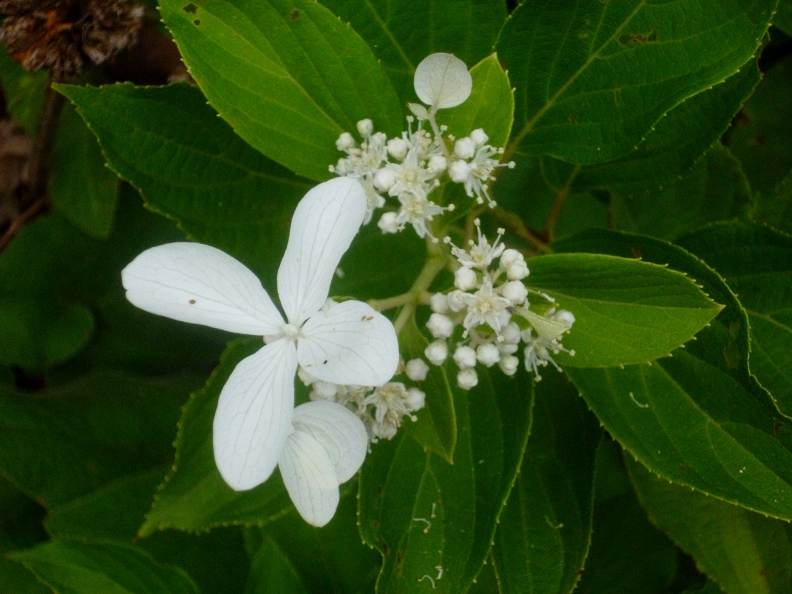
Well, actually, I’m not picking anything. And the last couple of days have consisted of a massive electric storm, plummetting rain, and now we have boomeranged down to 17C from 37C, with grey skies and more heavy rain. Not that I mind the rain, far from it, though it is a case of too little, too late, but at least it will reduce the death rate. All small plants are being carefully tended and watered, not to venture into the ground until this madness is over. But I liked this view of the Filipendula rubra Venusta, caught in morning sun a week or so ago, and thought that it looked good mingling in with the wild umbellifers.
Yesterday, the buds of the Hibiscus palustris still looked as if they were auditioning for a bondage movie, but today the first flower is out, photograph to follow if it survives this downpour.

I grew this Hibiscus trionum from seed about five years ago, and it has finally made it to just over a metre tall in our poor, stony soil. But it is beginning to look worth the effort, and it looks ridiculously green despite the dryness. Oddly, most English sites describe it as an annual, but I have to say mine is quite definitely perennial. Even our Maire gloomily pronounced last week that he hadn’t seen such dryness since the terrible summer of 2003, the summer when we first saw the house on our househunting visit over from Scotland.

Miscanthus sinensis Malepartus has decided to flower about a month earlier than normal and has gone straight to the silver stage.

The Sanguisorba menziessii clump that I moved last year is very much liking where it is- again, I suspect that there is water in small springs under this part of the garden. But the lovely red flowerheads are quickly going over.


Vernonia crinita ‘Mammuth’ has been flattened prior to flowering this year, as the rain poured off the bending banana leaves, so there are only one or two stray flowerheads surviving.

Having talked about Ceratostigma last week, this week the rather more refined South African cousin, Plumbago auriculata capensis, started to flower. In South Africa, this could grow in a lax fashion to maybe 2m high and wide, but with me, more like 1m x1m. It is definitely tender and has to come under cover at the end of autumn. For me, the darker skyblue of the Ceratostigma willmottianum is more attractive than the paler Plumbago, but in the land of small pickings, I will take what I can get.

This Hydrangea paniculata ‘Great Star le Vasterival’ flowerhead is perhaps half the size of last year, but I am glad it kept fighting to flower, and hope it gets an easier ride next year. it is named after another incredible plantswoman, Princess Greta Sturdza. who died in 2009. Of Norwegian and Russian background, she married into the Moravian Sturdza family, and on moving to France in 1955, began her superb garden at Le Vasterival, near Varengeville in Normandy. Le Vasterival still exists as a garden, not far from Le Bois des Moutiers, with more than 9,000 species and varieties of plants. More than fifty years of skill and passion created this garden, not to be missed if you are visiting Normandy. Among her cultivars is Hydrangea paniculata Great Star le Vasterival.